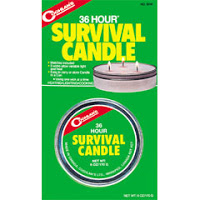As I look out my window and see the first significant snowstorm of the season, it makes me want to discuss the important topic of snow shelters.
Living in Canada, one is reminded that hypothermia can kill you in the summer as well as in winter. Hypothermia is defined as having a core body temperature less than 95 degrees F or 35 degrees C. Hypothermia used to be called ‘exposure.’
Factors that can cause hypothermia are:
– Exposure to Cold Air
– Exposure to Wind (wind chill factor)
– Exposure to Cold or Wet Surfaces
– Immersion in Cold Water
– or any combination of these.
Aside from dressing appropriately for the weather (in layers), two important precautions in the winter are:
– keeping dry (keep your outer clothes dry and move slowly to avoid perspiring)
– keeping out of the wind
Shivering is the first sign of mild hypothermia. This is followed by violent shivering, confusion and a loss of muscle coordination. At this stage you may no longer be able to build a fire or a shelter to save your life. Therefore it is important to build your shelter while you are still able, and avoid getting wet in the process.
Since shelter is so important here in Canada, my Personal Survival Kit (a.k.a. EDC – Every Day Carry) includes shelter and fire making tools:
– Aluminized Emergency Blanket
– Bic Lighter and Storm-proof Matches
– Folding Knife with a Saw Blade
The Aluminized Emergency Blanket – reflects 80-90% of your body head back at you, it is wind and waterproof. It will be a dry, warm surface between you and the cold, wet ground.
The Bic Lighter and Storm-proof Matches – The lighter is the primary fire lighting instrument, but the matches are there as a backup, in case of a mechanical failure in the lighter.
The Folding Knife with a Saw Blade – This tool can help you saw branches to make your shelter and can be used to process small wood for a fire.
Shelters
There are several shelters that can be made of snow. Some require considerable skill such as an igloo, others like snow caves or quinzees require a significant amount of snow.
 My personal favourite is a hybrid between a quinzee and a wikiup or wigwam. It uses snow, but it also uses tree branches and other brush. It can also take advantage of hollows formed by the lower snow-laden branches of spruce and fir trees, minimizing the work you have to do in constructing your shelter.
My personal favourite is a hybrid between a quinzee and a wikiup or wigwam. It uses snow, but it also uses tree branches and other brush. It can also take advantage of hollows formed by the lower snow-laden branches of spruce and fir trees, minimizing the work you have to do in constructing your shelter.
1. Dig out the snow at the bottom of a suitable tree, and remove the little branches to give you room to move around. All you need is enough space to sit up and to lie down. Anything larger will take more work to build and make it difficult to keep warm. Your shelter should be on the down-wind side of the tree. This will allow more shelter bulk (branches and piled up snow) to be placed between you and the wind.
2. Cut additional branches to fill in the big gaps and pile up more snow. The branches will support the snow, and the snow will add insulation to your shelter. The doorway should be kept small to minimize heat-loss. Also a crude door plug can be fashioned out of woven branches. String or other cordage can be useful to hold branches in place, but not necessary.
3. Adequate ventilation is assured by the air spaces around the trunk of the tree.
A small fire is incredibly dangerous in any shelter, but a contained twig fire is possible if monitored VERY closely.
 Alternatively, a safer option is to carry a 36-hour survival candle in your pocket, purse or pack. The metal tin comes complete with a book of paper matches and features three 12-hour wicks.
Alternatively, a safer option is to carry a 36-hour survival candle in your pocket, purse or pack. The metal tin comes complete with a book of paper matches and features three 12-hour wicks.
The small flame(s) will provide light for your shelter, but more importantly, it will help heat a small shelter by a couple of degrees. The metal lid can also be used as a container to melt snow into drinking water. By adding three toothpicks to the tin before you head out, you’l be able to make a simple pot stand to support the lid when melting snow.
This is as good place as any to point out that you need to drink as much water in winter as you would in summer. Although most 72-hour survival kits include 500 ml (1 pint) of water per person per day, people really need up to 2 litres (2 quarts) of water every day to maintain health. Luckily, we have adequate snow in the winter to melt into drinking water.
For more information on hypothermia, frostbite and wind chill factor, please follow these links:
Hypothermia
Frostbite
Wind Chill Factor
